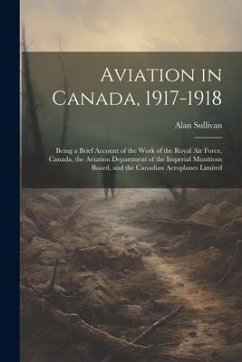
Analyze the Air Force Methods for Facility Sustainment and Restoration
Versandkostenfrei!
Versandfertig in über 4 Wochen
18,99 €
inkl. MwSt.

PAYBACK Punkte
9 °P sammeln!
The Department of Defense (DoD) is improving the procedures for identifying, advocating, allocating funding, and accomplishing facility requirements to improve the readiness capability to support the mission. The purposes of this research were to fully explore the methodologies employed by the Air Force (AF) and try to capitalize on industry standard practices to improve the AF methods. Industry has conducted extensive research devoted to the development of predictive models to estimate facility maintenance or sustainment requirements. The DoD and the AF have already implemented the facility s...
The Department of Defense (DoD) is improving the procedures for identifying, advocating, allocating funding, and accomplishing facility requirements to improve the readiness capability to support the mission. The purposes of this research were to fully explore the methodologies employed by the Air Force (AF) and try to capitalize on industry standard practices to improve the AF methods. Industry has conducted extensive research devoted to the development of predictive models to estimate facility maintenance or sustainment requirements. The DoD and the AF have already implemented the facility sustainment model (FSM) to predict facility sustainment requirements; now however, they are struggling with a justifiable methodology for predicting facility repair or restoration requirements. This research used statistical stepwise regression with historical AF facility requirement cost data for the last five years, in an attempt to develop a predictive model. The analysis results were not significant and did not result in an accurate predictive model, but the methodology and background research did produce some positive results. Observations regarding AF facility requirement reporting tools were identified and recommendations for improved integration were made in the research. This work has been selected by scholars as being culturally important, and is part of the knowledge base of civilization as we know it. This work was reproduced from the original artifact, and remains as true to the original work as possible. Therefore, you will see the original copyright references, library stamps (as most of these works have been housed in our most important libraries around the world), and other notations in the work. This work is in the public domain in the United States of America, and possibly other nations. Within the United States, you may freely copy and distribute this work, as no entity (individual or corporate) has a copyright on the body of the work. As a reproduction of a historical artifact, this work may contain missing or blurred pages, poor pictures, errant marks, etc. Scholars believe, and we concur, that this work is important enough to be preserved, reproduced, and made generally available to the public. We appreciate your support of the preservation process, and thank you for being an important part of keeping this knowledge alive and relevant.












